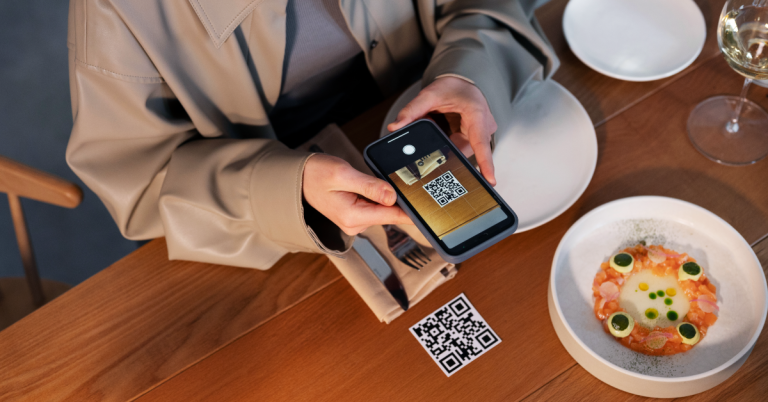Brick-and-mortar businesses have always been an integral part of our traditional shopping experiences. Walking into stores, exploring products, talking to representatives, and making purchases, are the usual ways in which we have mostly shopped.
With technology progressing in leaps and bounds, brick-and-mortar stores today are increasingly looking to leverage digital capabilities to woo prospects and existing customers, and expand business opportunities. Let’s dive deeper into the story of today’s brick-and-mortar establishments.
Brick-and-mortar entities are working strongly on their digital existence today. The stronger their identity on digital platforms, the easier it is for them to deliver positive experiences and embrace business opportunities. They understand the need to promote their location-level presence online and attract peoples’ attention through local engagement, offers, and promotions.
Strengthening the online hold along with physical customer-facing activities, are a critical aspect of the omnichannel marketing tactics that brick-and-mortar stores are implementing. Building formal business profiles on search engines such as Google, engaging through automated chat capabilities, and running location-specific campaigns are key and cost-effective approaches, to staying close to one’s target audience. It is such approaches that offer assurance to customers through digital channels, increasing the likelihood of in-store visits, interactions, and purchases.
Given that nearly every purchase activity today starts with a digital search, with consumers looking for conveniently accessible solutions, brick-and-mortar stores are putting in place sufficient digital infrastructure to strengthen their associations with their audience.
As brick-and-mortar stores build robust digital capabilities to become easily accessible to the online audience, it is equally important for them to plan channels via which they can keep their audience engaged. As omnichannel approaches continue to grow, brick-and-mortar stores put greater emphasis on physical as well as digital modes or customer engagement, for impactful outcomes.
Here are some interesting ways:
Refined in-store experience overall
Today, not just a product but the entire experience of accessing and buying a product has become important. Consequently, offering a delightful in-store experience is something brick-and-mortar stores are strongly focusing on. Whether, through helpful sales reps, or easy store navigation, or attention to presentation, or cleanliness, in-store engagement has the potential to make a significant impact on the customer’s journey.
A survey report by Salesforce revealed that 89% of customers would make repeat purchases from the same store if they initially found a positive experience. Brick-and-mortar stores, with their growing awareness of such aspects, are making serious efforts to take the customer’s experience to a whole new level
Digital signages and self-serving avenues
While this is an extension of a positive experience that customers may find at stores, it has its own significance today, considering the pivotal role technology plays in pretty much every context. Capabilities such as digital signages and self-serving kiosks empower customers and keep them covered in productive ways. These contribute to greater efficiency and keep customers updated at every point. While digital signages can be useful in promoting products and sharing strategic information to ensure these reach customers, self-serving features ca be useful for activities such as touchscreen ordering or self-checkout.
Smooth transactions and feedback-gathering options
The transaction point is a critical part of a brick-and-mortar store. And it also is a key element of the reviews & ratings that customers may share, about the store. Long queues, and unfriendly staff certainly are not useful during this part of the journey. The smoother the checkout, the better the customer’s experience. Capabilities such as contactless payments and Self-checkout kiosks are highly useful in this regard. It further stimulates them to scan in-store QR codes and leave reviews which can be beneficial in promoting the store’s digital profile. To offer a seamless transaction experience to prospects who may not physically be at the store but may be interested in buying from it, brick-and-mortar stores today are also building eCommerce-enabled location-level pages that display everything the store has to offer, along with easy payment and review options.
Leveraging such digital features are great ways to ensure a pleasant customer experience and returning customers.
Post-purchase customer service and engagement
Keeping customers engaged and valued, is an impactful way to strengthen their association with the store, and achieve increased retention. With periodic updates from the store about new products or local offers shared through channels such as emails, SMS, Messenger Bots, and local digital ads, stores can maintain their conversation with customers, assuring them of the best of service that they will continue to receive.

Brick-and-mortar stores are and will continue to represent the concept of ‘shopping’ and ‘purchases’. However, in alignment with the changing times, they are taking digital approaches to upgrade themselves, offer satisfying customer experiences, and grow business avenues. So staying focused on aspects such as digital presence, consistency of digital and physical information, discoverability on ‘Search’, digital engagement and reputation, and offering logistical ease across omnichannel platforms, have taken top priority as brick-and-mortar stores reshape their marketing strategies and customer engagement approaches.
As the internet increasingly influences the functioning of almost everything today, brick-and-mortar stores are in a position to make the most of digital capabilities, and re-establish themselves in robust ways, to achieve commendable business impact.